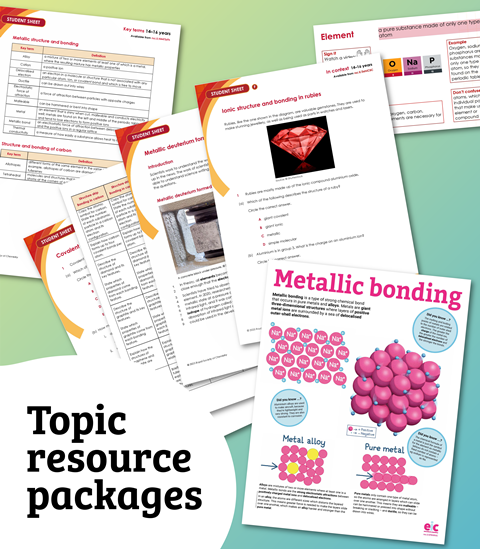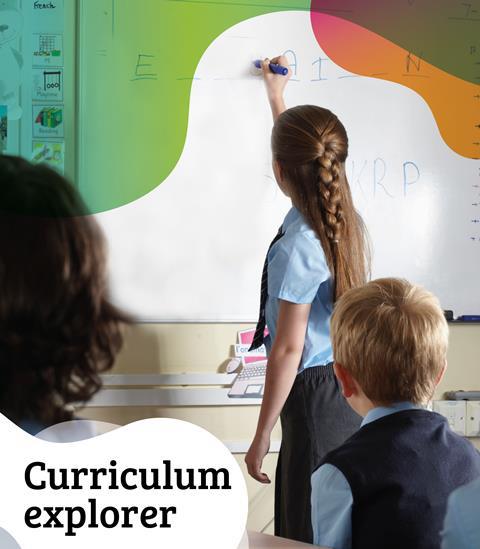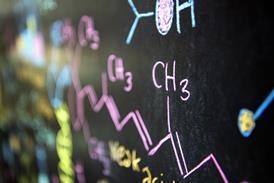All Analytical chemistry articles – Page 4
-
 Resource
ResourceIntroduction to spectroscopy
Get back to basics with this primer on the principles of spectroscopic techniques, including infrared (IR), ultraviolet-visible (UV-vis) and nuclear magnetic resonance (NMR). To make it even easier, each technique has clear explanations and descriptions supported by animations.
-
 Resource
ResourceChromatography
Chromatography covers a broad range of physical methods used to separate and/or analyse complex mixtures. It can be preparative or analytical and has a wide range of applications.
-
 Resource
ResourceUltraviolet–visible (UV-vis) spectroscopy
Learn how UV-visible radiation can be used to shed light on chemical identification and how our senses percept colour. From the theory behind molecular orbitals and electronic transitions to the application of this technique with relatable examples. Includes examples and interactive simulations to aid understanding.
-
 Resource
ResourceMass spectrometry (MS)
Mass spectrometry is a powerful technique in the modern analytic laboratory. Learn the fundamental theory behind the operation of a mass spectrometer.
-
 Resource
ResourceNuclear magnetic resonance (NMR) spectroscopy
Discover how nuclear magnetic resonance (NMR) spectroscopy works, with this series of topics breaking down the fundamental theory. Covering the electronic environment of atoms right up to demonstrating the practical identification of molecules. Includes examples and interactive simulations to aid understanding.
-

-
 Resource
ResourceSmartphone spectrometer
Make your own spectrometer with a DVD and a smartphone camera. This resource includes teacher, technician, and student guides.
-

-
 Analysis
AnalysisFinding the fake booze
Ever wondered what Raman spectrometry is? Here’s how it can find out what’s in a bottle without opening it.
-
 Resource
ResourceQualitative analysis quizzes
Find out more about our quizzes and watch the associated videos. The quizzes consist of 10 questions in each section and focus on providing formative feedback to students. The range of question types includes text response, numerical response, drag and drop and multiple choice. These quizzes are available free to ...
-

-
 CPD article
CPD articleMaking measurements
Help your students use appropriate apparatus to make and record a range of measurements
-
 Resource
ResourceTeach functional groups
To illustrate the differences in reactivity of isomeric alcohols, try using the iodoform demonstration in the video. Follow the discussion scenario in sequence for tips to help your students understand a difficult concept in carbon chemistry.
-
 Feature
FeatureChromatography fights food fraud
How chromatography helped solve a food safety crisis – includes classroom resources.
-
 CPD article
CPD articleEvaporation, filtration and crystallisation
How to add variety and context to lessons while getting students familiar with apparatus
-
 Resource
ResourceSpectroscopy resource packs
Use this material either alongside our Spectroscopy in a Suitcase scheme, or as a stand-alone resource to learn about spectroscopy. Cover the principles of spectroscopic techniques, and use real-life contexts to demonstrate their applications. This Resource contains: Introductory material for each spectroscopic technique which has been written by teachers. A ...
-
 Class experiment
Class experimentTesting for negative ions
Guide students into testing for negative ions with this practical. Students note their own observations and use their knowledge to discover more. Includes kit list and safety instructions.
-
-
 Feature
FeatureTaking care of the air
How do we control the pollutants we breathe in? This article includes specification links and resources for your classroom.
-
 Resource
ResourceChallenging Plants: Soil Science - Practicals
The nature of soil particles (inorganic and organic) and of soil water affects plant growth and, in particular, the availability of nutrients essential for the growth of quality crops in high yield. An understanding of the media in which plants grow helps scientists to exploit their potential.












